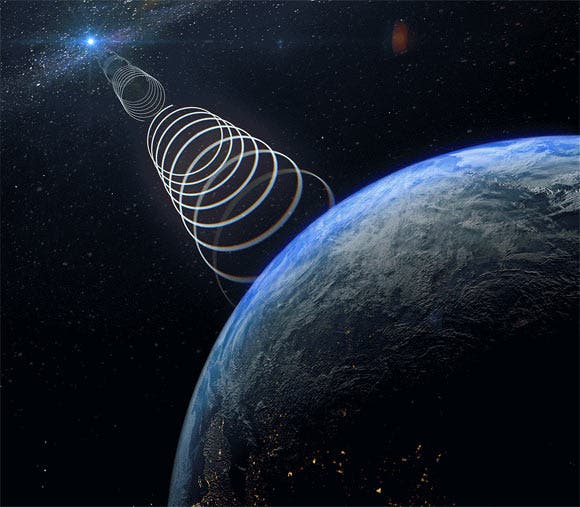The Milky Way offers up a lot of unknows, one reason that scientists are always on the lookout for new stuff. An international team of researchers might have just found some when they discovered unusual radio waves coming from the direction of the galactic core. The waves fit no current pattern of radio sources and could mean a brand spanking new class of stellar objects.
“The strangest property of this new signal is that it is has a very high polarization. This means its light oscillates in only one direction, but that direction rotates with time,” said Ziteng Wang, lead author of the new study and a Ph.D. student in the School of Physics at the University of Sydney. “The brightness of the object also varies dramatically, by a factor of 100, and the signal switches on and off apparently at random. We’ve never seen anything like it.”
Many types of stars emit some sort of variable light across the electromagnetic spectrum. Radio waves have become a larger part of discoveries with ongoing advances. Some of the more significant finds from radio telescopes are pulsars, supernovae, flaring stars and fast radio bursts (and even Apollo landing sites).
“At first we thought it could be a pulsar – a very dense type of spinning dead star – or else a type of star that emits huge solar flares,” said Wang. “But the signals from this new source don’t match what we expect from these types of celestial objects.”
Wang and his group found the unknown waves using the CSIRO’s ASKAP radio telescope in Western Australia. Follow-up observations were performed with the South African Radio Astronomy Observatory’s MeerKAT telescope. They had been surveying the universe since 2020 through a project known as Variables and Slow Transients (VAST).
Coined “ASKAP J173608.2-321635” after its coordinates (which doesn’t exactly roll off the tongue), the object started out invisible, became bright, faded away and then reappeared, a behavior that Tara Murphy, Wang’s Ph.D. supervisor called “extraordinary.”
After detecting six radio signals from the source over nine months in 2020, the astronomers tried to find the object in visual light. They found nothing. So they turned to the Parkes radio telescope in Australia. Again nothing.
After a switch to the more sensitive MeerKAT radio telescope in South Africa, they were able to pick up the lead.
“Luckily, the signal returned, but we found that the behavior of the source was dramatically different – the source disappeared in a single day, even though it had lasted for weeks in our previous ASKAP observations,” said Murphy.
The astronomers plan to keep their eyes peeled to look for more clues as to what it might be. They hope to learn more with the unveiling of the transcontinental Square Kilometre Array radio telescope. The total collecting area of the new telescope will be a square kilometer, making it 50 times more sensitive than any current radio instrument.
The findings appeared in the Astrophysical Journal.











